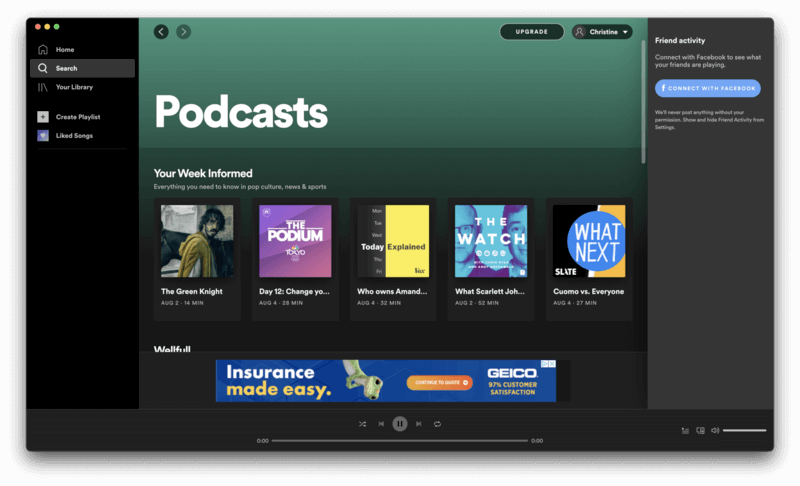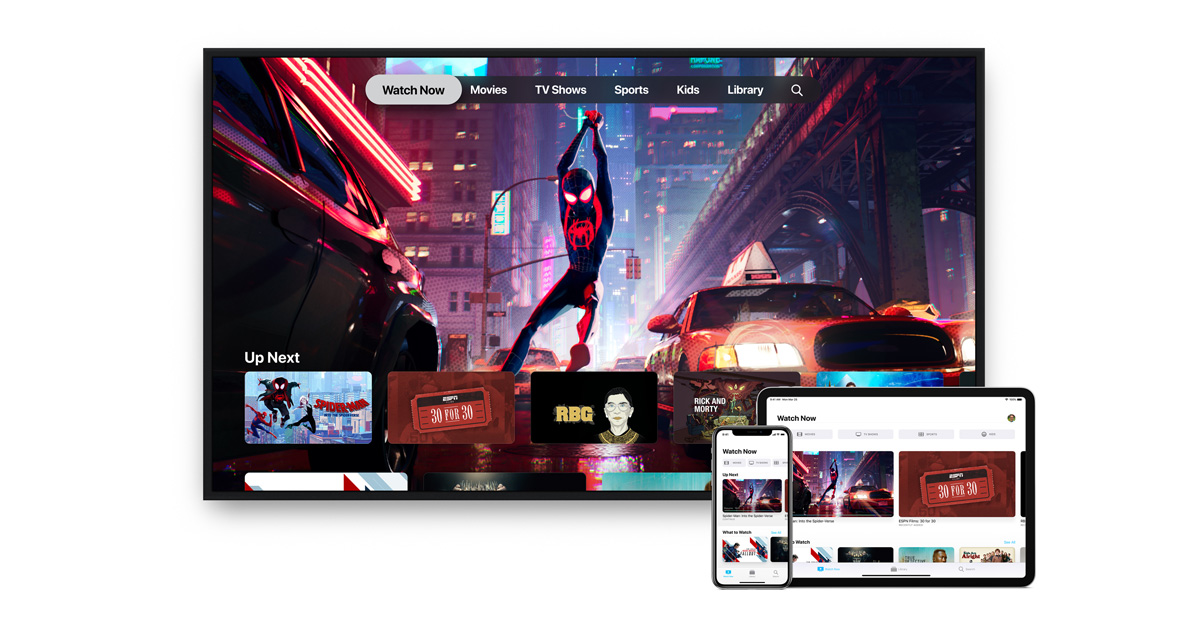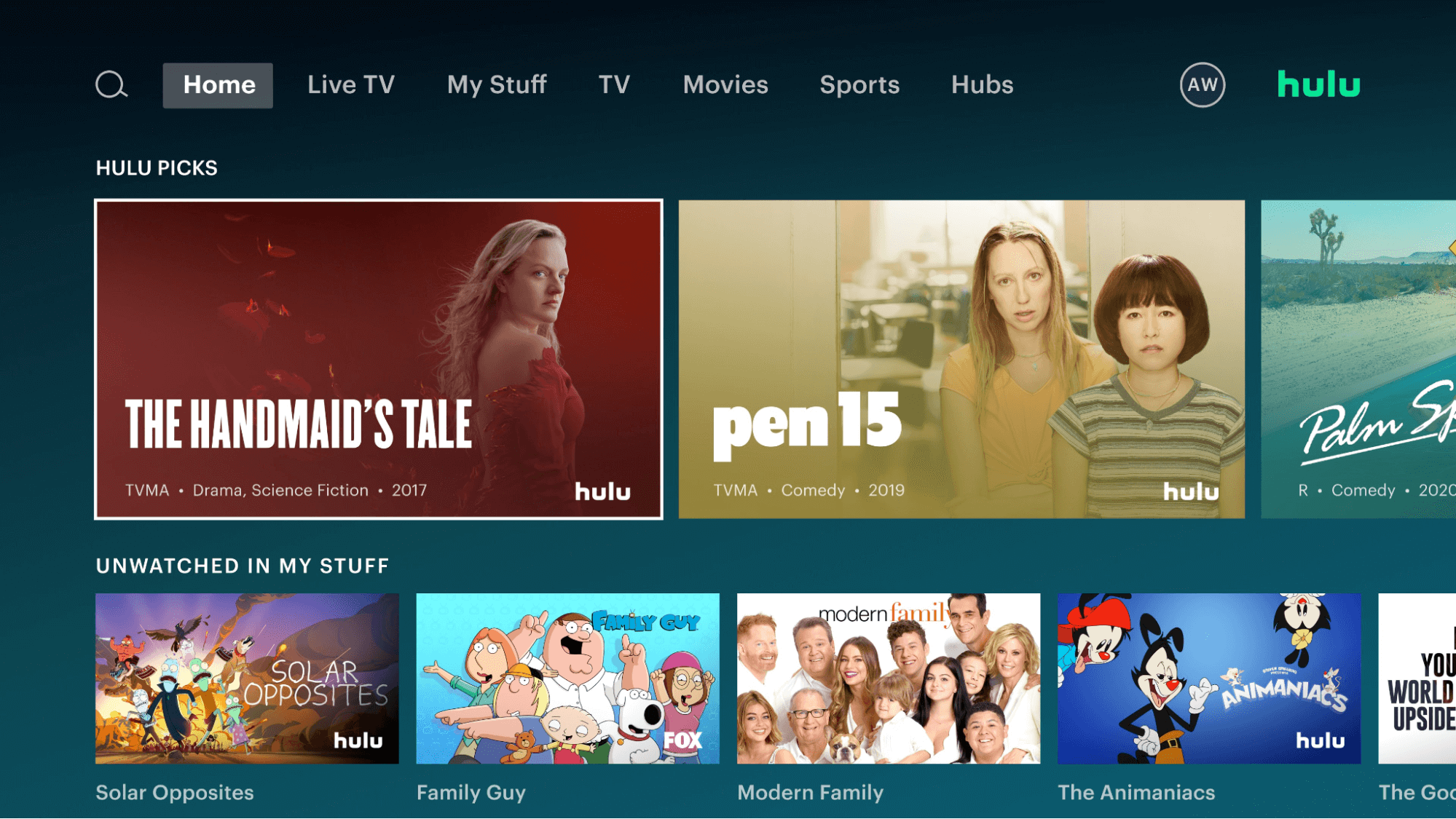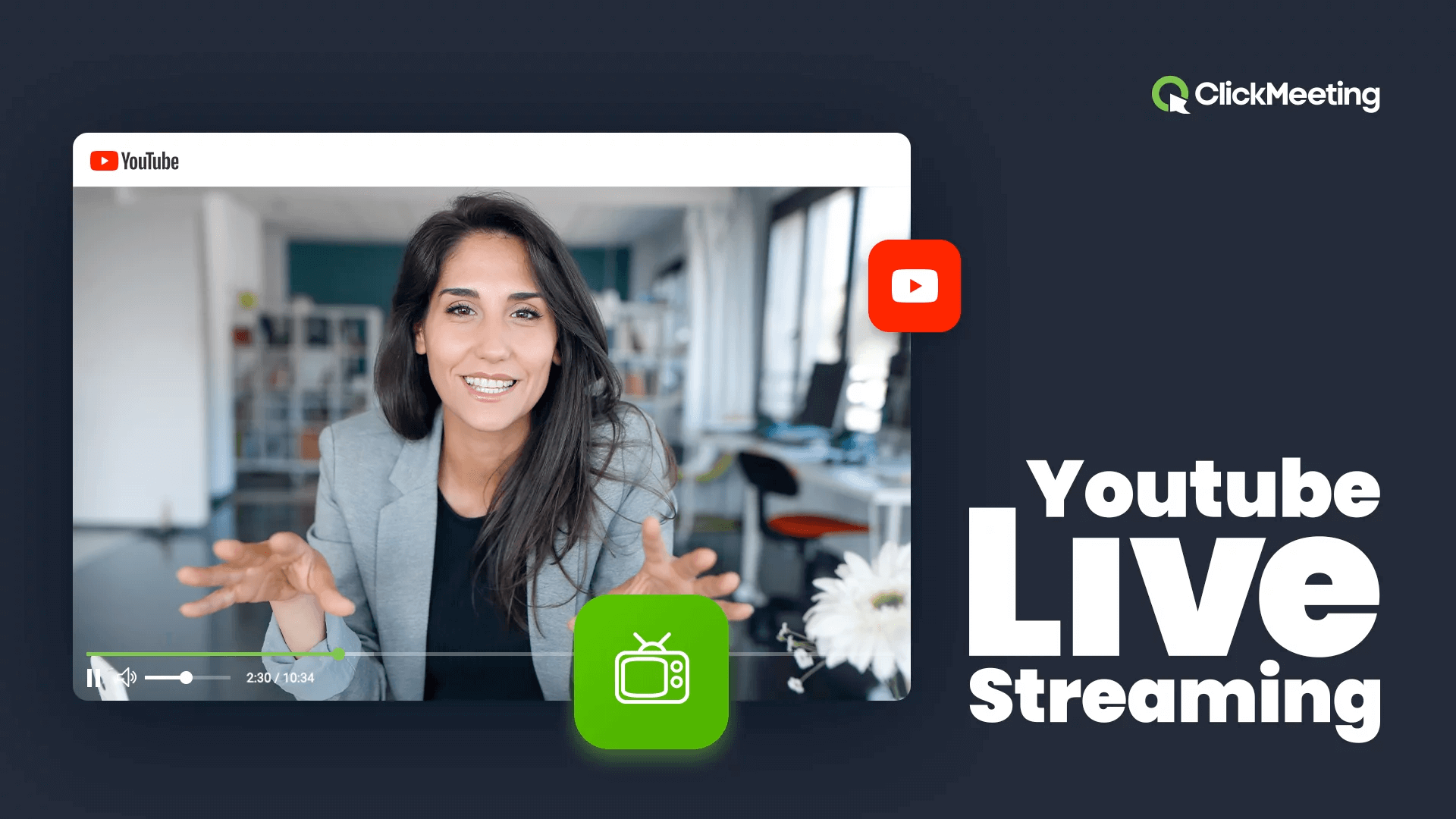20 May 2022 (updated: 2 December 2024)
Your Ultimate Guide to Streaming App Development in 2022
Chapters

Streaming app development is on the rise, but how to make it work for you and your product? See our ultimate guide to know some of the inspiring streaming platforms, top reasons to develop a custom solution, when to know you're ready, and more.
Intro
Streaming technology has made its dent in the world. With global giants competing in the market, the power and capabilities of streaming have caught the attention of many wanting to create their own content for business or personal needs. To learn about what exactly is streaming, the major competitors, the signs you need to build your own streaming platform, and more, read on!
What do we mean by streaming?
Streaming is a way that digital media files can be transmitted from one point to another. Audio and video are the most common types of files transmitted through this technology. During a streaming session, the data flows through a wired or wireless internet connection to the device (either a computer, mobile device or TV) as the user engages with the content. This is in contrast to downloading, where there is no continuous data flow.
How streaming works
In order to stream, the digital media that is being played on the device needs to be stored remotely on the cloud platform or content provider’s server. Then, the data travels from the location of storage in sections called “packets” rather than all at the same time. The packets are transmitted individually over the internet, which allows pieces of the digital media file to arrive on the device faster because of their smaller size. Upon the arrival of the packets, the media player on the device will read and interpret the data, and start “buffering” or recombining them.
The term “buffer” refers to the amount of data that has arrived but has not been watched. Buffering allows you to stream while the next packet downloads on the streaming device. A slower internet connection can cause a lag where your real-time consumption is faster than the buffer. This means that you’ll need to pause as the remaining parts of the file continue to arrive.
To learn about the benefits of streaming platforms and learn about the most popular services, read our dedicated article.
The different types of streaming services
Music & podcast streaming platforms
Music and podcast streaming platforms are a popular choice for many who take daily commutes to work or school. In 2021 alone, some 116 million people listened to podcasts in the US – which constitutes roughly about 40% of the country’s population.
Some household names for music and podcast live streaming platforms include Spotify, Apple Music, and YouTube. The main goal of these streaming platforms is to allow users to enjoy their favorite speakers and artists at any location.
 Source: iMore
Source: iMore
Game live streaming platforms
Game streaming platforms are a more recent innovation that has quickly gained popularity. Twitch was the first streaming platform to introduce game live streaming, and from there they have expanded to reach a broader audience through different live streaming events.
Platforms like YouTube, Facebook, and Huya Live (a China-based site) followed soon after. They have become popular live streaming platforms in the gaming world and have made a real impact on the market.
Interestingly, game live streaming can now be considered an actual profession. Streamers can earn an income through various methods, the most common ones being:
- Paid sponsorships and brand deals with game producers
- Live donations from fans
- Subscriptions from their audiences
- Ad revenue from the streaming platform.
Fitness streaming
Fitness OTT streaming is similar to gaming, where it can be done live and then saved so that it can be played later on-demand. With fitness streaming, instructors can simulate a real-life fitness class. Different streaming platforms have features that can facilitate this. One common option is the ‘comments’ section where participants can ask questions throughout the session.
Online radio streaming
This live streaming service type can be considered a real game-changer. Creators no longer need to rely on a standard radio license to run a station. Today, you will find thousands of independent radio channels which operate in a fully remote capacity. As a result, these stations can live stream not just to nearby listeners, but to a global audience. This broader reach allows them to earn more revenue.
Perhaps unsurprisingly, streaming has outperformed traditional radio in the past five years. A recent study has found that streaming was the sector leader in the fourth quarter of 2020, with a 33.3% share, and traditional radio came in second with only a 15.9% share.
Movie streaming services
The most competitive sector of the streaming platforms space, movie streaming (also known as vod streaming), has many huge players competing for global viewers. Household names include Netflix, HBO Max, Apple TV, Disney +, Hulu, and Amazon Prime Video. Most of these streaming platforms operate on a subscription-based model, but viewers can find some that offer free plans that feature ad intermissions.
 Source: Apple
Source: Apple
What makes a streaming service successful?
Different tiers of payment
Jeff Mains, the CEO of Champion Leadership Group believes that top streaming platforms offer a tier payment system.
The goal of streaming platforms and services is to gain paying customers, although this is challenging when a target audience has no awareness of the streaming platform’s existence. By implementing a tier payment system, you can solve this problem by having introductory lower payment levels which will encourage new customers to subscribe.
You can also have the option of a free membership with advertisements. This is what the streaming giant Shopify offers. Viewers will be able to consume your material while you earn advertising revenue. Usually, over time viewers become confident in your service and its ability to offer high-quality OTT streaming material, and from there they will subscribe to the paid subscription to enjoy content without any interruptions.
High customization capabilities
Adam Ng, the CEO and Founder of Trusted, believes that customization is a nice addition for many users, as it allows them to create their own unique experience and provides them with more control over the streaming platforms. A few examples of the most popular customization options that users look for include:
- Playback speed control
- Subtitle availability in different languages (particularly if your services are offered globally), closed captions and dubbed content
- General viewer account settings like privacy, ads options, theme settings, layout settings, grid and list viewing options, etc.
- Smart recommendations through AI (for example: ‘because you watched XXX, you may like YYY’)
- Building personalized playlists and ‘watch later’ playlists.
The above options show users that they can customize the streaming platform as they like, but also make sure to keep it manageable and don’t overload them with complexities. It’s important to consider that not every user will want to customize the OTT streaming platform. Some people will want to keep their interface simple, so also keep that in mind as you build out your streaming platform.
Highest possible streaming quality
Meera Watts is the founder of Siddhi Yoga, a company whose mission is to provide a holistic environment to transform lives. They do this through online yoga practices and meditation. Meera believes that the best streaming services allow users to consume digital content without disruptions. She says that instead of the entire media file being downloaded first, the digital content is transmitted to the device in small pockets which are stored on the user’s device and then streamed there remotely.
Meera believes that quality is key to a good video streaming service. By quality, she doesn’t necessarily mean bug-free, but rather the user experience. Things like intuitive interfaces, smart view mechanics, a strong set of data analytics to draw insights from, and high-resolution videos are all crucial to building a great live streaming platform.
Having a tier payment system, customizable features, and top streaming quality are only 3 of the many features required to have a successful and high-ranking streaming service. To learn more, read our dedicated article on what makes a streaming service great.
Top streaming platforms for inspiration
Hulu
Hulu is a platform known for its OTT streaming and original content. They are a live streaming app and offer a TV streaming service through Hulu + Live.
What makes Hulu one of the best streaming platforms?
- They offer users access to both on-demand and off-demand content, which eliminates the need for a separate cable TV service
- Users can live stream TV on any device
Hulu allows subscribers to watch recorded content. This is a differentiating factor for customers who value access to TV channels, and they may be more likely to subscribe to Hulu instead of competitors like Netflix and Prime Video who don’t offer this feature.
 Source: Microsoft
Source: Microsoft
YouTube
When it comes to streaming services, there are two approaches. The first involves offering on-demand or original content, and the second fully replaces a cable subscription. YouTube utilizes the latter approach, which enables them to offer a variety of options to users in one package such as over 80 channels for news, sports, and entertainment.
Although YouTube has a high subscription fee, it is justifiable to many. If you value having access to the largest combination of channels and streaming options on the entire streaming platforms market, this can be a worthwhile investment.
What makes YouTube one of the best streaming platforms?
- Their comprehensive package includes a line-up of sports, news, and entertainment channels
- User-friendly DVR features
- An intuitive and easy-to-navigate user interface
- By default, 3 simultaneous streams per account are supported (unlike other streaming platforms which have a default of 1)
- Popular add-on options.
 Source: ClickMeeting
Source: ClickMeeting
Top reasons to create your own online streaming platform
Scalability & independence
When using an external third-party live streaming platform, your business is confined to the technical limitations put in place by the platform. If you choose to create your own streaming platform, you’re free to:
- Add any new feature which could be valuable to your users, at any time
- Innovate your platform at your own pace and as the need arises, instead of waiting on the third party’s business decisions which will disproportionately affect you
- Integrate and collaborate with any third-party app without having to choose from a restricted pre-determined list
- Redesign or redevelop your app as you choose. When using an external streaming platform, you may be blocked from making any changes by the third-party and confined to their design limitations.
Better accessibility & UX
When you build and launch your own live streaming platform, you can make your content accessible to a global audience, without restrictions. Not only does this mean that users both in Japan and Canada are able to stream your content, but it also means that users on a bus, metro, or car can stream content restriction-free.
By going down this route, your content becomes more accessible to your target audience. Creating your own OTT streaming platform means that you have control over making the user experience simple, time-saving, and stress-free.
No hidden costs as you grow
When running a business, you want your costs to be as predictable as possible. One of the downsides that come with certain streaming platforms is that they bill their clients per viewer/listener. This can make it hard to budget and manage your finances. Businesses grow during unexpected times, and if yours happens to explode beyond what you’ve predicted, you can find yourself paying hefty price bumps to unlock more viewers. To get around this, you can create a custom live streaming platform and avoid this costly mistake that can set you back for months.
Still need more persuading? Take a look at our article on why it’s worth developing your own online streaming platform.
Are you ready to build your own streaming service? Here are some signs that say 'yes'
You have a large subscriber base
So you’ve grown a decent audience size and determined that your content is valuable to users. As you plan your next steps, it’s important to look at your costs. When you first kicked off your channel, it made sense to use one of the many third-party streaming platforms that charge you based on your users. But now that you’ve exponentially grown your following, the costs that you’re paying for those additional ‘seats’ might be significant. Perhaps, they might even keep you from growing further.
 Source: Unsplash
Source: Unsplash
If this is your situation, there’s a good chance you’ll benefit from branching out and building your own streaming platform. Since you’re not starting from scratch and already have an engaged audience, the risk of investment is much lower. All you need to think about now is redirecting your audience from the third-party app to your new custom app.
You want to add more features
External streaming platforms are notorious for their limited room for innovation. Although they take the app development work out of your hands, this comes at the cost of needing to abide by their standardized plans. If you find yourself needing more features, building your own OTT streaming platform is the best long-term solution. It will give you 100% autonomy, allowing you to develop all the features you need, without any trade-offs.
By having more control over the features and functionalities in your streaming app, you will be able to further differentiate yourself from competitors and align your app with the rest of your branding.
You want to have more user acquisition channels
If you want to build a successful streaming career, it’s likely that you don’t want to be known as someone who can be found on one specific channel only. Being known as that “popular baker on YouTube” or the “geopolitics’ journalist from Spotify’. In essence, having your brand associated with a third-party platform can be quite risky. There are a couple of reasons. Firstly, any issues related to the third-party streaming platform you stream through might reflect negatively on your brand. Say, if there’s an issue with subtitles and part of your users rely on them fully, they might decide to unfollow you as they won’t be able to understand you.
Secondly, by only streaming on one channel, you’re increasing your risk as a business owner. If the channel goes down and you have no backup plan, you’ve essentially lost your business overnight. Building your own streaming platform and diversifying your user acquisition channels reduces that risk.
A large number of subscribers, the need for more features, and user acquisition channels are just a few of the tell-tale signs it’s worth knowing of.
To learn about the remaining ones, be sure to give our dedicated article on when it’s worth building your own streaming service.
Next, let’s look at how you can build your streaming app in practice!
How to build a popular streaming app?
Study your target users
Before starting any new product or service, it’s important to have a solid understanding of the market you’ll be catering your app to. You need to take the time to get to know your audience’s needs and motivations, before launching your streaming platform. Those who have been using an off-the-shel streaming platform can leverage the insights they might already have. Both learning from the analytics panel, as well as their own observations, and qualitative feedback (like user feedback). This will help you immensely when building your own live streaming platform.
But don’t worry if you’re building your app from scratch and have no existing data from external channels. There’s a lot you can do to quickly gain an understanding of the market and users. You can conduct interviews, perform observational research, and engage in conversations on forums, among tens of others.
Conduct competitive research
Taking a look at your competitors can give you an idea of what’s working and what the current trends in your niche are. Capterra, G2, and Serchen are software review sites where you can see users' opinions of third-party streaming apps. The feedback will help you fill the missing gaps on the market and know what to stay away from when building your app. Another research tool is social media. Users are generally transparent on social media and you can get an idea of what people have to say in the comments section of your competitors.
Decide if you want to build the app in-house or not
Do you have the resources to build a streaming app in-house? Bringing a project like this to life requires not only time but hiring people with the right skillset. Furthermore, for companies in the early stage of business, hiring and sustaining an in-house app development team can not be financially viable. You can consider getting help from an external tech partner who will make sure that your app is in the right hands and that it is successfully brought into the market.
Start small & scale as you grow
You might have already heard of MVPs, i.e., minimum viable products. There’s a reason why most sources online will recommend you to build one out before going heavy into any digital product venture! An MVP will minimize the risk and establish proof of concept prior to investing large amounts of resources.
Here are some of the features that you should incorporate into the first version of your streaming app:
- Play, pause, and finish: a basic feature that enables you to start and end your streaming session in a user-friendly way.
- A module for collecting personal data, like preferences: if your focus is on building a community, it can be great to allow users the option to share some personal information (their interests, hobbies, and links to their social media profiles). You can also choose to let other users see each other’s profiles, or maintain privacy.
- Signup form: the form should allow viewers/listeners to create a user account and tune it. Basic fields to include are email, password, phone number, and signup by social media platforms.
Craft your monetization strategy
There are many different strategies you can decide on when creating your live streaming platform. You can turn to any (or all) of the below monetization options:
- Advertising (e.g., a short sponsored portion of the stream, a brand shout-out, or sharing your affiliate discount codes)
- Subscriptions (e.g., monthly or yearly plans)
- Premium features (e.g., creating a separate tier or one-time fee for access to personalized and exclusive content)
- Partner programs (e.g., partnering with and paying streamers for referrals).
Curious how else you can make sure your app is a success? Read our piece on how to start a streaming service to learn more tactics.
Top live streaming & OTT trends worth knowing about
Short-form video is exploding (and here to stay)
Sammy Shayna, the CEO and Owner of Couch Fame, believes that short-form content is already thriving, and this trend will only continue to grow. Sammy mentions that TikTok, whom few of us have heard of even a couple of years back, is now the biggest site globally. It’s only a matter of time until social media and other streaming platforms join the short video game and battle for attention. Sammy compares this to the storm of competitors that appeared after Twitch came out.
A growing Baby Boomer audience
Sumit Bansal, the Founder and CEO of TrumpExcel, notes that the pandemic has given rise to a group of tech-savvy “silver streamers,” who now make up an estimated 10% of all streamers. Even though Millennials remain the largest streamer demographic today, those over the age of 65 in countries like Taiwan, Hong Kong, and Japan are excited about the prospect of streaming. Knowing this, live and OTT streaming platforms should also be mindful of catering to these audiences. In particular, they should make sure that their features are easy to use for everyone, regardless of age.
OTT streaming platforms will incorporate VR & metaverse
Patrick Smith, Editor-in-Chief at Fire Stick Tricks, believes that the introduction of VR and Metaverse will be one of the biggest OTT streaming trends in the next several years. Patrick believes that the accessibility of this immersive streaming will dominate in the OTT streaming services world.
 Source:
Source:
This experience is a captivating game-changer for all, but particularly for gaming enthusiasts. Facebook has already launched Oculus, a collaborative VR platform for gamers. We can expect to see similar innovations come out from competing brands.
The above-highlighted trends are just 3 of the many OTT trends coming our way in 2022. To read more, we encourage you to read our piece on 11 over the top and live streaming trends.
Summary
Streaming platforms are a game-changer for businesses. They have brought a new world of opportunities to share your voice and add value to the lives of millions of users. The ability to stream to a global audience also comes with an incredible perk – i.e., the opportunity to monetize your content and build out an expert image.
However, to make sure that your streaming service is a success, you should make sure you’ve done the groundwork. In particular:
- Conduct user research and understand how you can stand out from your competitors
- Establish whether you should build your own app or use a third-party app – a decision you’ll be making based on your project type, customization needs, and budget
- Decide how you will monetize your service – through ads, subscriptions, sponsored episodes, or other.
One thing is for certain – if you decide to launch your own streaming service, you’re in for an exciting journey. Good luck!





